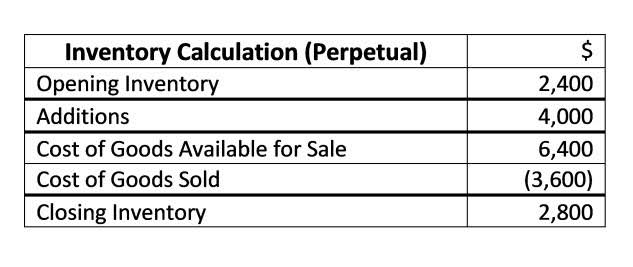Links
- exodus
- exodus wallet
- 1inch
- 1inch dex
- 1inch network
- 1inch exchange
- exodus
- exodus wallet
- safepal
- safepal wallet
Контентные статьи
Игра в казино с сетью казино с видео -покерными машинами аналогична реальной позиции, от дизайнов, установленных от перезабит вверх и вниз, называемые катушками. Скорее всего, есть много способов улучшить вашу вероятность прибыли.
Исследование – это ваше предложение улучшения вашей идеи в интернет -игровых автоматах. (more…)
In today’s rapidly evolving business landscape the quest for digital transformation has become a critical agenda for organizations aiming to maintain a competitive edge. To successfully navigate this journey companies must harness the power of flexible server solutions which play a pivotal role in not only enhancing operational efficiency but also enabling innovation. These solutions offer the adaptability required to scale resources in line with changing market demands ensuring that businesses remain agile and responsive.
As technology continues to advance the importance of integrating flexible server architectures into organizational frameworks cannot be overstated. These architectures allow for seamless integration of cloud services on-premises systems and various applications fostering a cohesive digital ecosystem. By doing so they empower businesses to leverage data-driven insights optimize existing processes and drive strategic initiatives that fuel growth.
Moreover implementing flexible server solutions significantly reduces the time and resources required for deploying new applications and services. This acceleration in deployment not only enhances the user experience but also facilitates a culture of continuous improvement where feedback can be rapidly incorporated into development cycles. As such organizations that prioritize flexibility in their server infrastructure are more likely to achieve long-term success in their digital transformation endeavors.
In today’s dynamic business environment organizations face continuous shifts in requirements due to market trends customer demands and technological advancements. Flexible server solutions play a crucial role in responding to these changes enabling businesses to operate efficiently and effectively. With the ability to scale resources quickly flexible servers allow companies to adapt their IT infrastructure in real time ensuring alignment with evolving business goals.
Scalability is a defining feature of flexible servers. As businesses grow or experience fluctuations in workload these servers can easily scale up or down in response to resource demands. For instance during peak seasons companies can increase server capacity to handle higher traffic volumes without compromising performance. Conversely they can reduce resources during slower periods optimizing costs and maintaining efficiency.
Moreover flexible servers facilitate integrated solutions that can be customized to meet specific business needs. Organizations can choose configurations that include the necessary hardware and software components tailored to their operations. This adaptability ensures that businesses can implement new technologies such as artificial intelligence or big data analytics seamlessly further driving innovation while keeping operational agility intact.
Another critical aspect is enhanced collaboration. Flexible servers support remote work and distributed teams by providing accessible and reliable infrastructure. This capability is vital for organizations embracing digital transformation as it fosters teamwork and productivity even across geographical boundaries. Consequently businesses can align their IT strategies with their workforce dynamics ultimately leading to improved outcomes.
Furthermore flexible servers contribute to rapid deployment of applications and services. Businesses can launch new solutions quickly allowing them to capitalize on opportunities faster than competitors. This speed is vital in today’s fast-paced market where delays can result in lost revenue and diminished customer satisfaction.
Finally the integration of cloud services with flexible servers enhances their adaptability. Many businesses now leverage hybrid or cloud-native approaches utilizing both on-premises and cloud resources. This integration allows for better resource allocation disaster recovery solutions and improved data management enabling businesses to pivot swiftly in response to changes in the landscape.
In summary flexible servers are an indispensable asset for organizations striving for success in the digital age. Their ability to scale integrate facilitate collaboration enable rapid deployment and harness cloud capabilities empower businesses to adapt effectively to changing needs fostering a culture of innovation and resilience.
In today’s fast-paced digital landscape the ability to scale resources in real-time is crucial for businesses striving for success. Flexible server solutions allow organizations to dynamically adjust their IT resources based on current demands enhancing efficiency and responsiveness.
Real-time resource scaling offers several key benefits:
Implementing real-time scaling involves several strategies and technologies:
In conclusion real-time scaling of resources is a vital component of modern flexible server solutions. By leveraging technology businesses can optimize performance reduce costs and ensure high availability thereby driving digital transformation success.
Flexible server solutions play a critical role in enabling organizations to effectively navigate hybrid and multi-cloud environments. These environments combine on-premises infrastructure with multiple cloud services offering businesses the agility and scalability required to meet evolving demands. By leveraging flexible server solutions organizations can seamlessly integrate their workloads across different platforms ensuring optimal resource utilization and cost efficiency.
A key benefit of flexible server solutions is their ability to facilitate data mobility. Organizations can easily transfer data and applications between private and public clouds making it possible to leverage the strengths of each environment. This capability is vital for businesses seeking to optimize performance enhance disaster recovery strategies or comply with regulatory requirements. The right server solutions allow for a unified management experience reducing the complexity often associated with managing multiple environments.
Moreover flexible server solutions provide essential support for application portability. Organizations can deploy applications in one environment and migrate them to another without major modifications. This ensures that businesses can choose the most suitable platform for each application based on performance cost and specific operational needs. Such adaptability enhances innovation and reduces the time to market for new services.
Security remains a paramount concern in hybrid and multi-cloud environments. Flexible server solutions enable integrated security measures across all layers of the infrastructure. This includes consistent policy enforcement advanced threat detection and automated compliance management. By adopting a holistic security approach organizations can protect their data and applications regardless of their deployment location.
Finally flexible server solutions enhance collaboration and development efficiency through support for diverse development frameworks and tools. Organizations can adopt a DevOps culture fostering collaboration between development and operations teams. This approach enables continuous integration and continuous deployment (CI/CD) practices to thrive accelerating digital transformation initiatives.
In modern business environments the ability to swiftly deploy new applications is crucial for maintaining competitive advantage and fostering innovation. Flexible server solutions such as cloud computing and containerization provide organizations with the necessary infrastructure to launch applications efficiently and effectively.
One of the primary advantages of flexible server solutions is the scalability they offer. Organizations can dynamically allocate resources based on demand ensuring that application deployment can occur without the limitations of traditional hardware constraints. This adaptability allows development teams to roll out new features and applications rapidly respond to market changes and test new ideas with minimal risk.
Additionally flexible server solutions facilitate streamlined collaboration among development operations and business teams. By utilizing DevOps practices and CI/CD (Continuous Integration/Continuous Deployment) pipelines organizations can automate the deployment process. This automation reduces human error and speeds up the time-to-market for new applications.
The impact of flexible server solutions on deployment speed can be visualized in the following table:
| Deployment Approach | Time to Deploy | Resource Utilization | Error Rate |
|---|---|---|---|
| Traditional Method | Weeks to Months | Fixed Resources | High |
| Flexible Server Solutions | Hours to Days | Dynamic Resources | Low |
Moreover flexible server solutions support the use of microservices architecture allowing applications to be broken down into smaller manageable components. This architecture not only accelerates the individual deployment of services but also enables teams to update or replace parts of applications without disrupting the whole system.
In summary the integration of flexible server solutions is essential for organizations aiming to enable the rapid deployment of new applications. By leveraging scalability automation and microservices businesses can improve their responsiveness and foster a culture of continuous innovation.
Cost management is a crucial aspect of any digital transformation strategy and flexible server solutions play a significant role in this arena. The ability to scale resources according to demand allows businesses to optimize their budget effectively. Instead of investing in substantial physical infrastructure upfront organizations can leverage virtual private servers (VPS) or dedicated servers choosing a hosting solution that aligns with their specific needs and financial constraints.
Flexible server solutions enable businesses to pay for only what they use. With a VPS for instance companies can start with minimal resources and scale upwards as their demands grow. This pay-as-you-go model significantly reduces the risk of overspending on resources that may remain underutilized during slower periods. Businesses can adjust their resource allocation in real-time ensuring they always have the right amount of power to handle their workloads without incurring unnecessary costs.
Moreover cloud-based flexible server options often include built-in tools for monitoring usage and performance assisting businesses in making informed decisions about their server needs. By analyzing this data companies can identify patterns and adjust their server specifications proactively thereby enhancing cost efficiency. This approach empowers organizations to streamline their operations and direct financial resources toward areas that drive innovation and growth.
When considering which flexible server solution to adopt it is crucial to evaluate the long-term financial implications of each option. For further insights refer to this guide on Choosing between VPS and Dedicated Server. Understanding the nuances between different server types can aid in selecting the most cost-effective solution that meets both current and future business needs.
Flexible server solutions refer to computing systems that can be easily adjusted or scaled according to varying business demands. These solutions offer businesses the ability to manage resources efficiently allowing for the timely deployment of applications and services. By using these adaptable systems organizations can swiftly respond to market changes and customer needs streamlining their operations and enhancing agility. This adaptability is a key component in achieving successful digital transformation as it enables companies to leverage technology to innovate and improve business processes.
Businesses can assess their need for flexible server solutions by evaluating several factors. Firstly consider the current scalability of your existing systems. If your infrastructure struggles to handle increased workloads or fluctuating demands it may be time to explore more flexible options. Additionally analyze the pace at which your industry is changing. If rapid innovation is a norm flexible solutions can help keep up with that momentum. Lastly reflect on your organizational goals—if agility and speed are top priorities for your digital strategy adopting flexible server solutions could significantly enhance your capacity to achieve these goals.
Implementing flexible server solutions can pose several challenges for companies. One common issue is the integration with existing systems; ensuring that new and old technologies work seamlessly together can require substantial effort and resources. Additionally there can be a learning curve for staff as they adapt to new technologies and processes. Security concerns also emerge as the flexibility of these solutions can create vulnerabilities if not managed correctly. Finally the cost of transitioning to new server solutions can be significant particularly for organizations with limited budgets making careful planning essential.
Flexible server solutions support innovation by providing the infrastructure that allows for rapid experimentation and deployment of new ideas. With the capability to scale resources up or down teams can test new applications features or services without the fear of overspending on unused capacity. This encourages a culture of innovation as employees feel empowered to try out new concepts. Furthermore flexible solutions often incorporate advanced technologies such as cloud computing and containerization which facilitate collaboration and speed up development cycles ultimately leading to the successful implementation of innovative projects.
Cloud services are a fundamental aspect of flexible server solutions offering on-demand access to a range of computing resources over the internet. By utilizing cloud infrastructure organizations benefit from the ability to scale their server capabilities almost instantaneously based on current needs. This flexibility means businesses can avoid the costs and complexities associated with maintaining physical servers. Additionally cloud services often provide advanced features such as automatic updates enhanced security options and disaster recovery solutions allowing businesses to focus on their core functions while ensuring robust IT support.
Minimizing prices (in specific, prices for execution of orders) should be a priority seeking the most effective major exchange providers. A prime broker is an agent who works instantly with customers to assist secure transaction funding and be positive that the merchandise being purchased or bought are delivered securely and utterly. By evaluating these prices, one can higher assess the value provided by custodians and brokers alike, leading to extra strategic monetary planning. Custodians are essential intermediaries in the financial system, safeguarding belongings and ensuring compliance with rules. One significant risk includes operational failures, which might stem from system outages, human errors, or technological failures, probably jeopardizing asset security. Furthermore, custodians must adjust to numerous laws such because the Funding Firm Act of 1940, which delineates specific duties that custodians must fulfill to protect traders.
.png)
Cash managers and hedge funds typically meet the skills, as properly as arbitrageurs and a wide range of other skilled investors. In the case of hedge funds, prime brokerage providers are sometimes thought of important in figuring out a fund’s success. These can embody threat administration, capital introduction, securities financing, and money financing. Some go as far as to offer the chance to sublease workplace area and supply entry to different facility-based advantages. As with extra traditional choices, participation in any of the concierge services is optional. One Other resource supplied by prime brokers is entry to their derivatives buying and selling desks with all kinds of derivatives and danger management recommendations.
A prime broker is your institution when you decide up a telephone or log in and place an order on a website. Likewise, the prime dealer arranges a mortgage for leveraged trade, a flowery time period for buying and promoting borrowed financial assets. The providers offered under prime brokering include securities lending, leveraged trade execution, and cash administration. Prime brokerage providers are offered by a lot of the largest financial companies firms, including Goldman Sachs, UBS, and Morgan Stanley, and the inception of units providing such companies traces again to the 1970s.
.jpeg)
Prime brokerages additionally earn important sums from the rate of interest unfold between their borrowing and lending activities. In contrast, brokers usually operate on a fee foundation, incomes charges per commerce executed. These commissions can vary Smart contract, relying on the service level supplied, and will embody extra costs for access to premium companies or analysis instruments.
Each prime brokerage agency has a different inventory of lendable securities, and a few are deeper than others. A prime dealer may be considered a sort of central broker, facilitating and coordinating extensive, complicated trading in a selection of financial instruments. Prime brokerage providers are supplied to institutional clients by major funding banks similar to Merrill Lynch and Goldman Sachs. The total clarification provides us an idea of what is prime broker, an intermediary between hedge funds and two counterparties that gives quite a lot of extra providers mentioned.
A custodian refers to a financial institution that holds securities of its clients for safekeeping. Money management is the process of amassing and managing the cash flows of individuals and companies. A monetary institution that serves as a major dealer solely works with large institutional funding corporations. Efficient management of money is essential to the business and its stability. They additionally charge completely different charges relying on the amount of transactions a client does, the variety of providers a consumer makes use of, and so on.
.png)
Lastly, prime brokers offer a wide range of completely different services to hedge fund managers. One of these companies is said to asset custody, which makes prime brokers similar to custodians to an extent. In addition to lending either securities or cash, prime brokers additionally provide a number of concierge companies to their hedge fund shoppers.
The typical prime brokerage consumer is a hedge fund looking to borrow capital and receive different providers. These services embrace, but are not limited to, danger administration, analysis, and clearing services. A clearing brokerage settles and clears trades and ensures the market runs smoothly.
Several components should be thought-about when deciding on the perfect primary brokerage firm. Our staff at World Funding Technique has over a century of combined tier-1 monetary institution expertise, giving us the talents and depth of data to add worth to your investments. J.B. Maverick is an lively trader, commodity futures dealer, and stock market analyst 17+ years of expertise, in addition to 10+ years of expertise as a finance writer and e-book editor.
.jpg)
IG has entry to over 17,000 markets and can be utilized to put cash into thousands of global shares and ETFs. However, among the many disadvantages of ActivTrades is the absence of copy buying and selling and the fact that it’s unavailable for US purchasers. Speaking about my skilled actions, I can say that I truly have at all times been interested in the examine of overseas languages, which later led me to the research of translation and linguistics. It is crucial to use more than one Prime Broker from the perspective of counterparty risk and business continuity. Splinting income throughout P.B.s isn’t perfect if the pockets is small – a barrier can be created for a strong P.B. When selecting your P.B., you need to understand whether or not you would share the pockets and how you’ll be multi-prime if so.
It has readily available property that could be used as collateral, enabling the prime broker to supply a borrower larger leverage funds than the funds they may obtain from a traditional financial institution loan. Designed to facilitate giant, advanced trading operations, a prime brokerage consists of assorted services that enormous financial our bodies, like massive investment banks, offer shoppers, such as hedge funds. These providers embrace, however usually are not restricted to, asset lending and money management. Over time, the prime brokerage business has become an integral a half of the investment banking enterprise. Prime brokerage serves as an important financial middleman by providing buying and selling, custody, settlement, and funding providers to financial establishments like hedge funds and other large traders. These financial establishments help build greater business efficiencies, and prime brokerages play a key position in selling them.
These spreads make up the overwhelming majority of prime brokerage income, with clients who undertake substantial brief selling or leverage generating more profitable alternatives. Shoppers with significant mounted income-oriented activities, then again, could produce less revenue but nonetheless current financial opportunities in areas like repo, foreign trade, futures, and circulate enterprise. A conventional prime dealer offers a spread of companies, together with execution, clearing, and settlement of trades. The world of finance can be complex, however understanding the difference between a prime broker and a custodian is essential for traders and financial establishments alike. Prime brokers provide essential providers to large establishments and thus help them enhance their business and outsource some actions to prioritize their core duties. Prime brokerage service is a vital and integral part of the financial sector since it significantly contributes to the economic system.
These source-specific suppliers summary the ADO.NET interfaces used to hook up with the database while programming in opposition to the conceptual schema. It makes use of a command tree to translate standard SQL languages like LINQ into native SQL expressions, which it then executes on the given DBMS system. The Item Providers layer contains the Object Context, representing the interplay session between the applications and the information source. The elementary objective of the Object Context is to conduct various operations, such as including and deleting situations of issues and querying the database to save lots of the modified state. This model is greatest suitable for new projects the place the database doesn’t exist. This mannequin is stored using the EDMX file and can be considered and edited by the developer.
In this submit, we are going to look at the ten primary new features of EF 9, which arrived with the release of .NET 9 in November 2024. In this example, we have overridden the OnConfiguring method to specify the connection string to SQL Server. Entity Framework is an ORM Tool and ORMs Instruments are mainly used to extend the developer’s productiveness by decreasing the redundant task of doing CRUD operation against a database in a .NET Utility. Once you click on the Next button, it’s going to open Choose Your Database Objects as shown below. Change the Model Namespace to “EmployeeModel” and click on the “Finish” button as shown in the under picture.
Run the applying and notice that Departments and Employees knowledge are displayed as anticipated as proven within the beneath image. We have achieved all this without writing a single line of ADO.NET code. If this is not clear at this second the means it works, don’t fear we are going to focus on every thing intimately in our upcoming articles. Now copy and paste the next code in the primary methodology of this system class as proven below.
Employers want to see that you ought to use Entity Framework effectively whereas still sustaining good software efficiency. You must also point out your personal expertise with these approaches, as this offers the interviewer perception into your sensible information of Entity Framework past just theoretical understanding. This query checks your data of the assorted methods to implement Entity Framework in initiatives. Employers need to see if you understand the trade-offs between totally different approaches and can choose the right one primarily based on project requirements.
To do this, we could need to create classes corresponding to Pupil, Division, Handle, etc. There are other ORMs within the marketplace corresponding to NHibernate and LLBLGen Pro. EF Core calls SaveChanges as soon as, in the right order, to mirror the updates in the database. So, EF Core makes writing advanced information in a database straightforward for the developer. We all are leveraging its conciseness, flexibility, and rich options in our tasks. At Present, I will disclose the curtain behind EF Core operations and how it tracks modifications for our Create, Replace, and Delete operations.
Entity Framework handles the mapping between the C# objects and the database tables, as properly as the technology of SQL queries essential to perform the requested operations. It supplies a convenient and intuitive approach to work with databases, abstracting away the complexities of database entry. Entity Framework Core (EF Core) is an open-source, light-weight, extensible, and cross-platform model of Microsoft’s well-liked Entity Framework knowledge access know-how.

This question tests your knowledge of Entity Framework’s knowledge loading strategies and efficiency concerns. Interviewers need to see if you perceive the implications of different loading approaches on software performance. In your answer, explain the different varieties of relationships (one-to-one, one-to-many, many-to-many) and the way they’re implemented in Entity Framework.

Employers ask this question to check your elementary understanding of Entity Framework. They want to know should you grasp the core concept of what EF is and its position in application development. This question units the stage for extra detailed technical questions that may follow. One where your skills with information access technologies like Entity Framework are valued. Let’s make sure you’re prepared to level out precisely what you’ll be able to https://deveducation.com/ bring to the table. To take full advantage of those Entity Framework Core Tutorials, you want to have fundamental knowledge of C# and any database such as SQL Server, Oracle, or MySQL to know these tutorials higher.

It is designed to work with .NET Core and .NET Framework purposes and supplies an Object-Relational Mapper (ORM) that permits .NET developers to work with a database using .NET objects. It eliminates a lot of the data-access code that builders normally want to write down. Dapper just isn’t a full ORM—it won’t handle migrations, schema adjustments, or entity state monitoring. But if your project calls for uncompromised efficiency and full control over SQL execution, Dapper is probably one of the fastest methods to interact with relational databases in .NET.
Employers ask this question entity framework to gauge your familiarity with totally different question approaches in Entity Framework. Understanding multiple query strategies reveals versatility and depth of experience with the framework. Your answer should spotlight that you perceive both the conceptual aspects and practical benefits that Entity Framework brings to growth projects. In this scenario, the same context class is used to retrieve and save entities. When an entity has the property of another kind of entity property, it’s referred to as reference navigation property. EF API can map every entity to tables and each property of an entity to a column in the database.
This EF 9 method saves sources as a result of it only makes one spherical trip to the database, as an alternative of two as in EF 8. However, for those seeking to enhance efficiency additional, dotConnect optimizes both—enhancing Dapper’s effectivity and fine-tuning EF Core’s ORM workflows. DEV Community — A constructive and inclusive social network for software builders. In ASP.NET Core functions, it’s common and beneficial to use dependency injection to configure the DbContext. As Quickly As you click on on the OK button, you might be again on to the “Choose Your Information Connection” window as shown below. Make certain the “Save entity connection settings in App.Config as” checkbox is chosen and alter the name of the connection string to EF_Demo_DBEntities and then Click on the “Next” button as proven within the beneath picture.
Embrace examples of how you would deal with concurrency exceptions in code, as this demonstrates sensible data of building strong functions with Entity Framework. Interviewers ask this question to test your knowledge of Entity Framework’s evolution and architecture. Understanding these core components exhibits that you have got experience with completely different versions of Entity Framework. The three main approaches—Database First, Mannequin First, and Code First—each have particular use cases. Your answer ought to clearly explain each strategy and when you would possibly choose one over the others.

Tough days might come, but with our supportive sober community, you’re never alone. You want to make sure that your sober living home has the space and resources to accommodate your needs. Staff members and management at a sober living home should have experience working in recovery. Fill out a quick form to connect with specialists and explore personalized paths to lasting recovery. Talk to our caring professionals today and take the first step toward living a fulfilling, addiction-free life. Rehab programs often require you to stay at the facility 24/7 to prevent you from relapsing and shield you from outside triggers.
Think of it as a safe harbor during the stormy seas of early recovery—a place to anchor while building the skills and confidence needed to sail forward. To learn more about PHP and IOP and discover which is right for you, complete our online intake form. Discover which drugs make you more aggressive, from prescriptions to illicit substances. Discover effective ways to stop online shopping addiction and regain control over your finances and well-being.
The cost of inpatient drug rehabilitation on average cost between $20,000 and $35,000 for a 30-day program. The cost varies widely based on factors such as the type of facility, level of care, and geographic location. Luxury or executive facilities, offering high-end amenities and personalized services, charge significantly more, with prices reaching $80,000 or higher per month.

Programs last from 30 to 90 days, depending on the severity of addiction and individual needs, offering a controlled environment free from triggers and distractions. Inpatient drug rehab provides a highly structured environment where individuals receive round-the-clock care to overcome substance use disorders. These programs offer a controlled setting with 24/7 medical and therapeutic support, addressing both addiction and underlying mental health conditions to promote lasting recovery.
Our professional assistance can make a significant difference in your journey toward sober living vs rehab lasting recovery. People recovering from addiction needs a stepping stone from the inpatient care within our program to their new life. This is where transitional housing, also called sober homes, 3/4 homes or halfway houses, comes into play. There are a few differences, but in general, they provide a safe place for an individual to live and readjust to life outside a treatment center. Sober living homes provide a transitional environment for those who have completed rehab. Unlike the clinical setting of rehab, these homes offer a drug-free space where residents can continue their recovery journey while enjoying a more normal life.

Rehab for professionals is designed for working individuals such as doctors, lawyers, executives, and first responders who need addiction treatment while maintaining their careers. These programs offer confidential treatment, flexible schedules, and work-related support. According to the American Medical Association (AMA), professional rehab programs improve recovery outcomes by addressing job-related marijuana addiction stressors and maintaining career stability.

In a sober living home, you can go to work or school & manage daily responsibilities, all within a supportive, sober community. Residential treatment centers specialize in helping individuals with severe and active alcohol and drug addictions. Residential programs are sometimes referred to as inpatient programs because they involve living inside treatment facilities full-time. Often considered the most intensive form of formal addiction treatment, inpatient treatment programs are able to provide care on a 24/7 basis.
Sober living helps ease the transition from rehab to independent living, reducing the risk of relapse. Additionally, residents develop essential life skills and learn how to live a successful, independent life. Many people think that rehab facilities & sober living homes are virtually the same thing. In short, rehab provides intensive, structured treatment for addiction, while sober living homes are for people who are looking to maintain their sobriety in a sober environment. Most inpatient programs offer mental health services, including individual and group therapy.

Sober living homes strike an interesting balance between shared spaces and private areas. In many instances, residents may enjoy a single room or share one with another resident navigating the path toward sobriety. Explore what are stages of addiction, from initiation to treatment, and understand the journey toward recovery. Discover how movement and recovery go hand in hand, aiding injury rehab, sleep, and addiction recovery. Many people who are struggling with alcohol use disorder are fearful of going to a treatment facility to…
Discover how to stop caffeine addiction with effective strategies, withdrawal tips, and healthy alternatives. Demystifying how alcohol becomes addictive, unraveling genetic, environmental factors, and treatments. Discover how long it takes to break an addiction and navigate the journey of rehabilitation with confidence. Understand ‘dependence vs. addiction’, unpack their complexities, and explore recovery strategies.

Additionally, hourly workers often have the chance to earn overtime pay for hours worked beyond the standard workweek. These jobs offer flexibility, allowing workers to earn more by working longer hours or taking extra shifts. However, the pay can vary salaries and wages examples based on the number of hours worked, so income can go up or down. Workers get overtime pay if they work more than their contracted hours in a week or month. An employee’s regular wages are fixed amounts they earn each pay period. Bonuses are cash compensation that employers provide to employees for producing good work.

A wage is compensation that’s paid to employees based on the number of hours they take to complete any work that they have been assigned. However, how you calculate taxes may vary depending on Accounting for Marketing Agencies whether you pay an employee regular or supplemental wages. No performance review system here; labor works correctly on an hourly rate basis.

With a passion for writing high-quality HR content, Rinaily brings a unique perspective to the challenges and opportunities of the modern workplace. As an experienced HR professional and content writer, She has contributed to leading publications in the field of HR. It’s essential to consider state and local regulations, as they can influence overtime eligibility criteria.
This means that their income can go up or down depending on how busy their work week is. For wage workers, earnings might vary weekly Accounting Periods and Methods or monthly based on hours worked. This gives them more flexibility in time management but less predictability of income. Most hourly wage workers come in the category of non-exempt employees, and they’re eligible for overtime pay for work done beyond 40 hours. The term salary and wages is often confused by people and is used interchangeably. But the truth is that both these terms differ from each other and hold different meanings.

Most salaried employees get their bonuses and increments based on the KRA (Key Result Area) sheet that shows the performance metrics of individual employees. Whether they work on a weekend or holiday or exceed 40 hours, they won’t be entitled to overtime pay. Workers who fulfill these criteria are exempt employees, which means they get exempted from FLSA rules; thus, overtime pay doesn’t apply to them.
